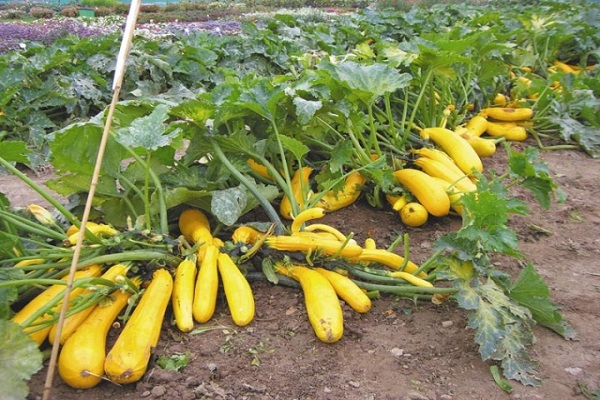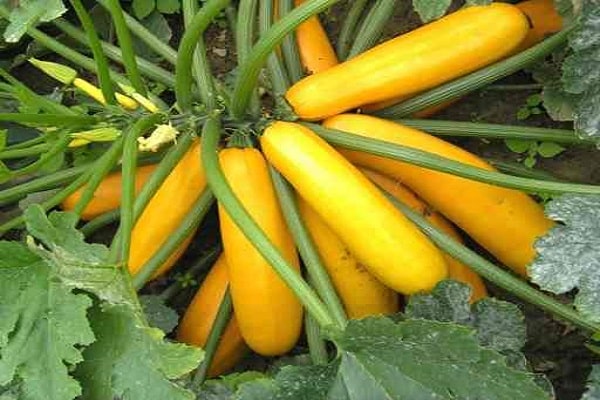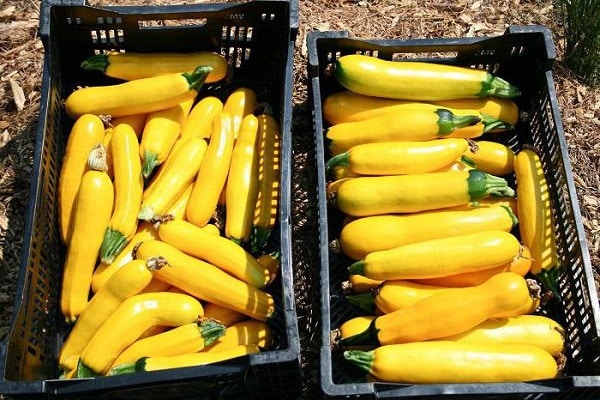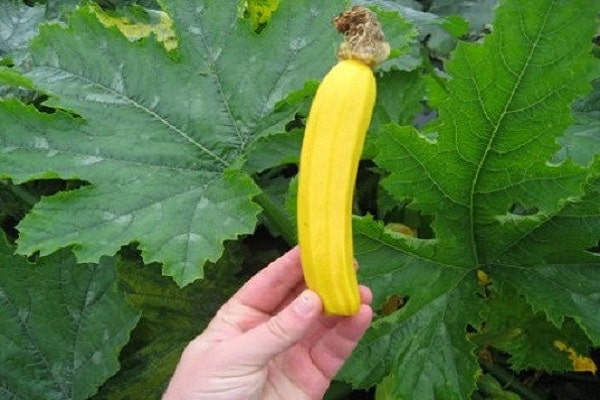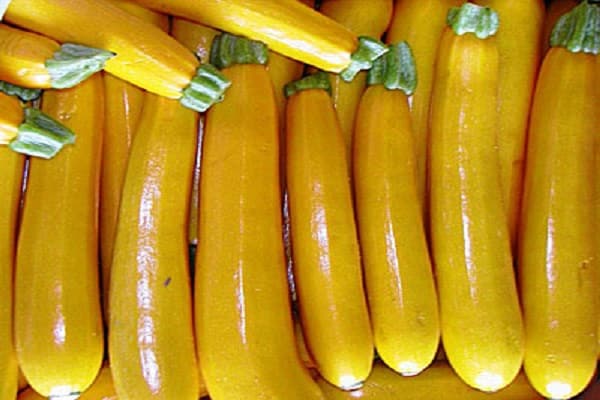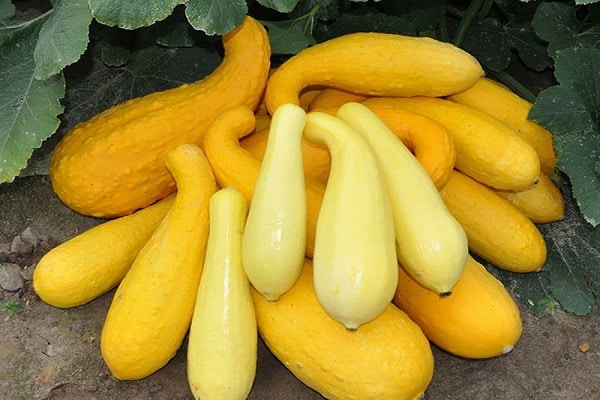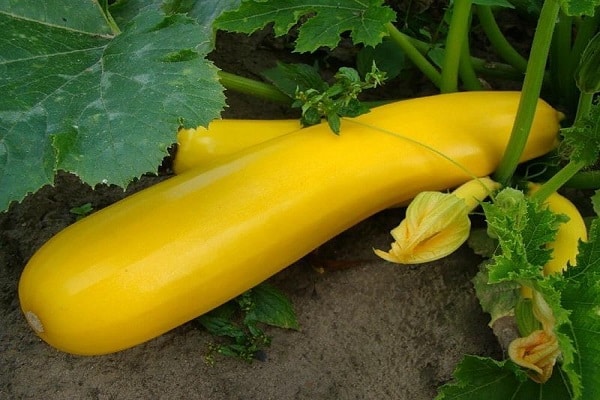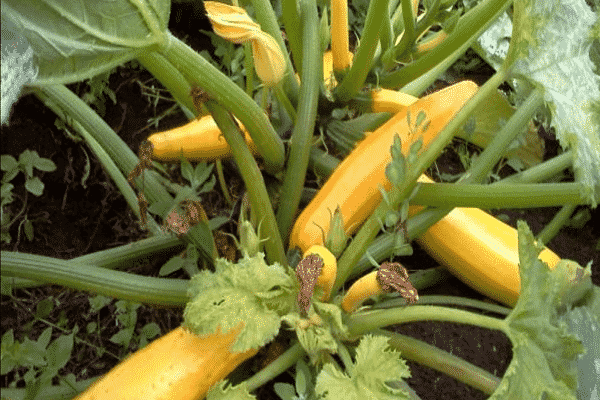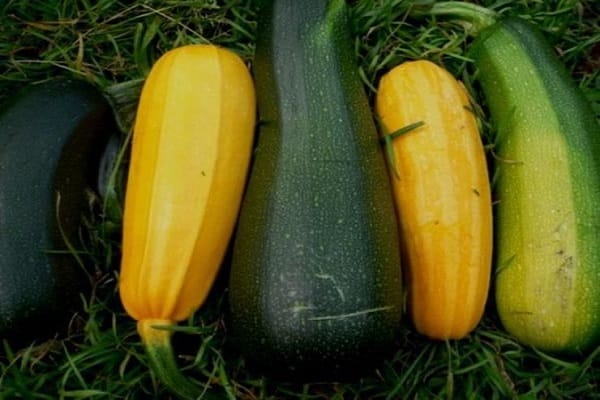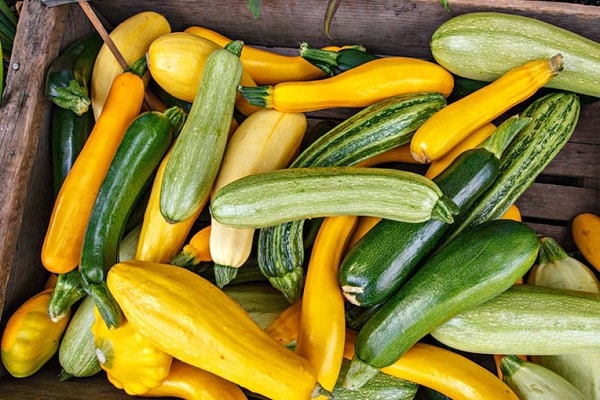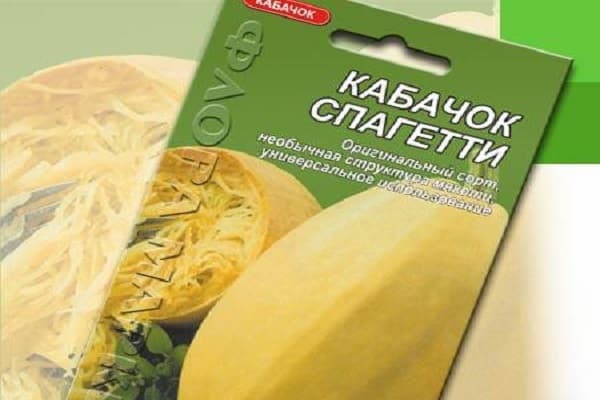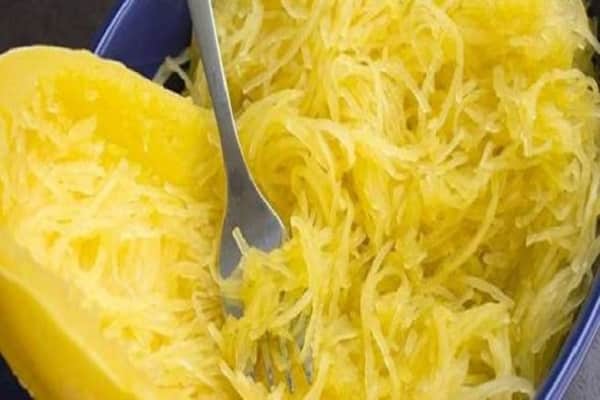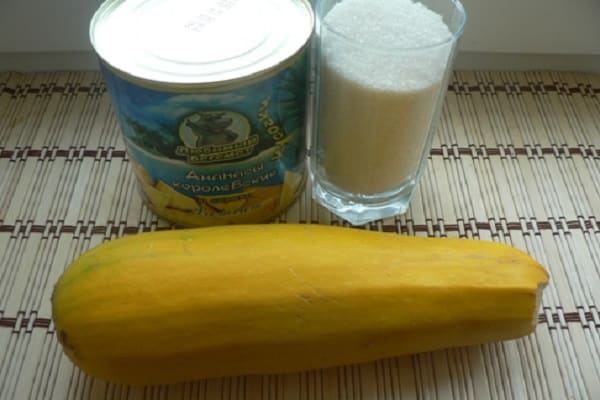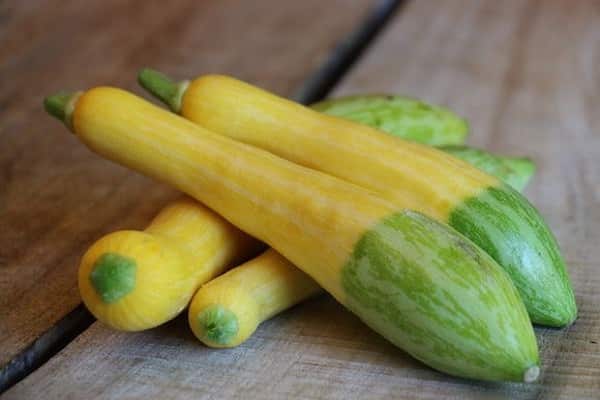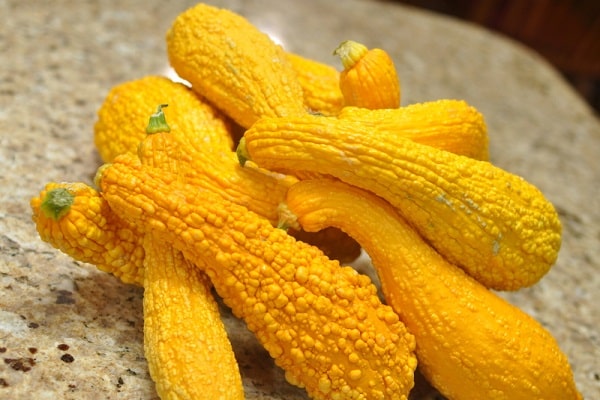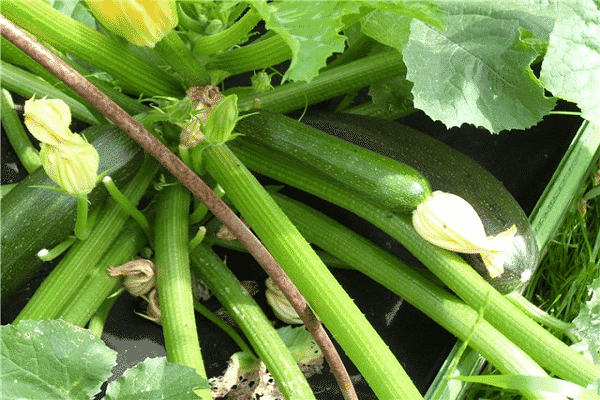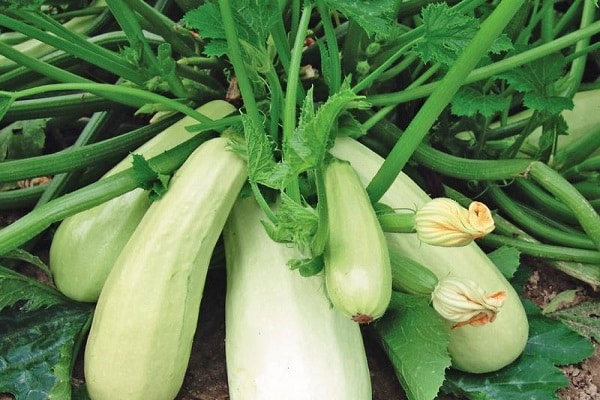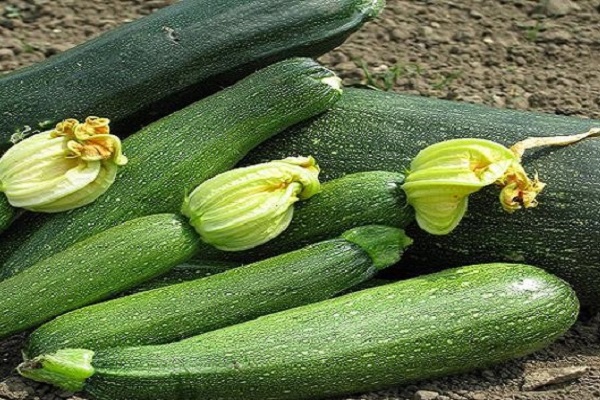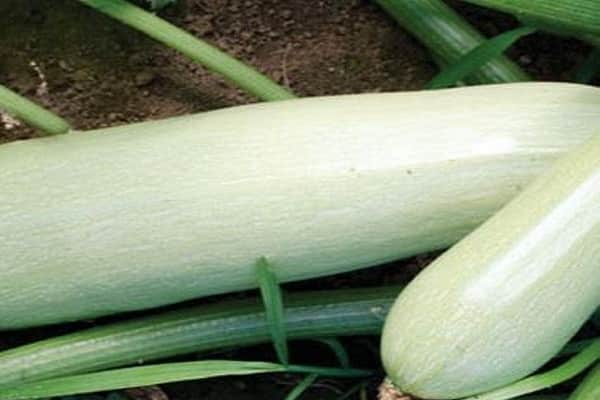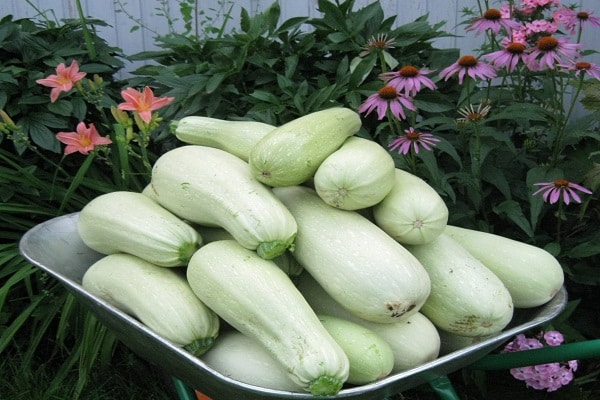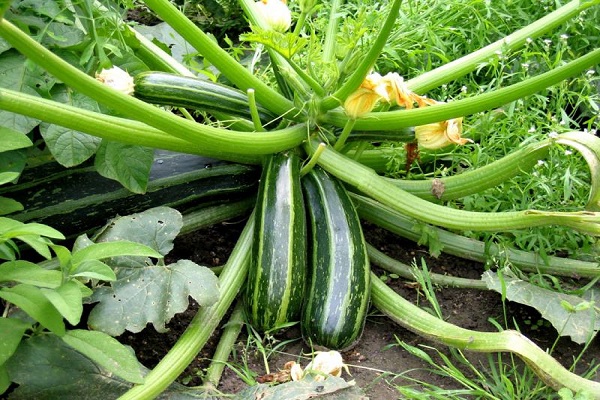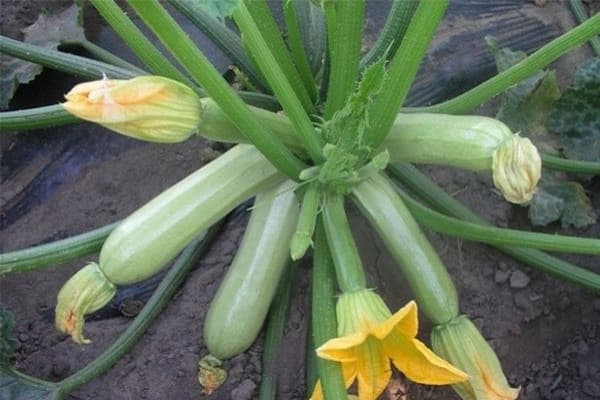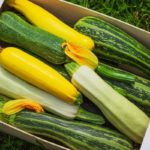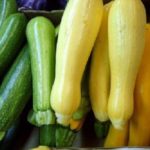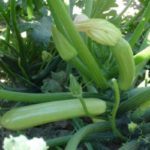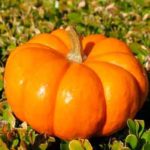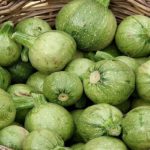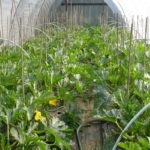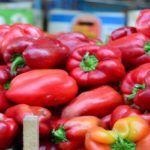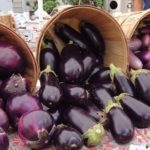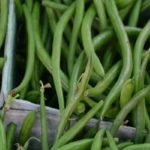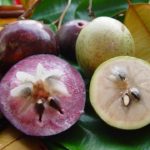Varieties of yellow zucchini, which differ from the usual green ones in the decorative appearance of their fruits and high content of carotene and vitamins, have become widely popular in Russian gardens. Caring for such unusual representatives of vegetable crops is standard, so growing yellow-fruited zucchini does not cause difficulties even for novice gardeners. Depending on the varietal characteristics given below, it is convenient to select suitable yellow zucchini for your summer cottage.
- For fresh consumption
- Gold Rush F1
- Goldline F1
- Sunlight F1
- High-yielding varieties
- Russian size
- Anchor
- Golden
- Unusual varieties of yellow zucchini
- Banana
- Orange
- Pear-shaped variety
- Spaghetti
- Pineapple
- Marshmallow
- Golden comb
- The best bush varieties for growing in open ground
- Aeronaut
- White
- Waterfall
- Odessa
- The best self-pollinating parthenocarpic species
- Cavili
- Jellyfish
- Parthenon
For fresh consumption
Below are hybrids of foreign selection used in fresh cooking due to their distinctive taste characteristics.
Gold Rush F1
Yellow-fruited squash, ripening 49 days after germination. Smooth, even fruits, the length of which is 18-20 cm, are notable for their cream-colored pulp and delicate texture. The skin is thin and does not become rough when ripe.
Harvesting from the bush is simplified due to its open type, compactness, erect shoots and leaves. Average yield - 12 kg/m2. The hybrid was bred by Dutch breeders.
Goldline F1
The early ripening hybrid bears fruit in smooth cylindrical zucchini up to 30 cm long. The pulp is characterized by a sweet taste and juiciness. Plant type: bush. The hybrid is productive, high-yielding. Zucchini is also used for processing. Average yield is 15 kg/m2. Czech selection.
Sunlight F1
An early (40-45 days pass from the moment sprouts appear to harvest) hybrid of yellow zucchini. The variety produces cylindrical fruits up to 18 cm long and 5 cm in diameter with white pulp of a sweet taste. Fruiting is extended and continues until frost. Advantages:
- Virus resistance;
- preservation of taste characteristics even if the fruits are not collected on time;
- long-term yield of the crop up to 4-6 months.
Sunlight bushes are so compact that they are planted according to a thickened pattern: from 4 to 6 plants per 1 m2. With this planting, the maximum yield is achieved - 12 kg/m2. The main disadvantage is the requirement for care.French selection.
High-yielding varieties
When choosing a specific type of zucchini, gardeners pay attention, first of all, to yield. Below are varieties and hybrids of zucchini with increased productivity.
Russian size
The variety, the description of which is distinguished by the yellow-orange color of the peel and its particularly large fruit: the diameter of one specimen is on average 20 cm, and the weight is 20 kg or more. It ripens late—90 days pass from seed germination to harvest. The pulp is non-fibrous and tender. Russian size is suitable for long-term storage. The bush is climbing, so the recommended planting pattern provides for a distance of 80 × 80 cm.
Anchor
A yellow-fruited variety characterized by early ripening (38-40 days), stress resistance, shelf life and disease resistance. From 1 m2 harvest up to 12 kg of aromatic zucchini weighing 0.9 kg.
The main distinguishing feature of Yakor is the high content of dry substances in the pulp. The harvest is stored for up to 60 days. Anchor is grown even in the short Siberian summer. The planting pattern is standard for bush zucchini - 60-70 × 60-70 cm.
Golden
A mid-early variety of zucchini, its fruits are harvested 47-50 days after seed germination. The average weight of the fruit is 500 g, length - 15 cm. The pulp is sweet, crispy, remains firm when preserved and does not change its consistency. The taste is reminiscent of cucumber. The peel is bright orange-yellow, smooth, glossy. Zolotina produces female type flowers, so the fruits are set successfully.
At least 15 zucchini are harvested from one plant. Plant type: bush. These zucchini are harvested on time, otherwise the taste is lost.When feeding Zolotinka, it is important to control the level of nitrogen in the soil - if there is an excess of the element, the shelf life of the fruit and its taste characteristics sharply deteriorate.
Unusual varieties of yellow zucchini
One of the following varieties of zucchini, the fruits of which can surprise with their shapes, can become an interesting decoration for the garden.
Banana
Hybrid of bright yellow color. Features increased productivity (up to 8.5 kg/m2, 30 pieces are tied on one plant), resistance to diseases and positive taste characteristics of the pulp. The fruits are cylindrical, weighing up to 700 g and up to 40 cm long. Zucchini of this hybrid have a universal purpose. Bush plant with decorative leaf blades.
Orange
It stands out among other yellow zucchini varieties due to its unusual round shape; the diameter of the fruit reaches 17 cm. The pulp is juicy, tender, with a nutty note. The early ripening variety bears fruit 1.5-2 months after sowing the seeds. Zucchini is suitable for canning and processing, as well as for fresh consumption. The disadvantages of Orange are:
- short shelf life;
- rapid overripening of fruits with a decrease in varietal qualities;
- low yield (up to 5 kg/bush).
The plant is strong but compact.
Pear-shaped variety
Zucchini ripens on the 38-52nd day after emergence and has an average weight not exceeding 1 kg. Pear-shaped is characterized by keeping quality, resistance to diseases, high taste and commercial qualities. The variety is resistant to temperature changes and reliably bears fruit in unpredictable weather, which is typical for the Ural summer.
With minimal care it produces normal yields. The pulp is aromatic, interesting orange in color, and is characterized by beta-carotene content. The variety is recommended for use in children's and dietary nutrition.
Spaghetti
Zucchini that produces fruits with a dense skin of a bright yellow hue, ripening late (95-130 days). The taste characteristics of this species are revealed only when the fruits are fully ripe. The hybrid is interesting in cross-section - its long-fiber pulp resembles spaghetti. The weight of one specimen reaches 1.2 kg, and the length is 30 cm. The bush is climbing and requires shaping. Advantages:
- keeping quality;
- transportability;
- taste;
- ease of care.
Flaws:
- average yield;
- rapid growth of lashes;
- late ripening, due to which not all regions of the country have time to form noodle pulp.
The recommended planting pattern is 70 × 70 cm.
Pineapple
Another interesting early-ripening variety that produces yellow-fruited zucchini. Reviews about Pineapple are extremely positive; it combines excellent taste of the fruit and high yield (up to 10 kg/m2).
The fruits are small - weighing up to 900 g, contain few seeds, and are not prone to over-ripening. The flesh is a lighter shade than the bright yellow-orange skin. Bush type plant, productive, cold-resistant. The leaf blades have distinctive yellowish spots.
Marshmallow
A two-color yellow-green hybrid with sweet dessert fruits. These taste characteristics of zucchini appear when the fruit is 15 cm long - they are eaten even raw. The disadvantage of this variety is that it is demanding in care; in the absence of proper growing conditions, Zephyr produces average yields. It tolerates drought especially poorly. Productivity - 8 kg/bush. The recommended planting pattern is 80 × 70 cm.
Golden comb
The zucchini is yellow-fruited and has an average ripening period (60-65 days). The description of its shape is quite interesting - pear-shaped, with large tubercles.The weight of one copy reaches 2 kg, the taste is excellent, the shelf life and transportability are good. The advantages of the variety include high cold resistance. Planting pattern - 70 × 70 cm.
The best bush varieties for growing in open ground
Bush squashes are characterized by compact vines, which can significantly save space on the site (the standard planting scheme for bush varieties and hybrids is 40 × 50 cm), and wide leaf plates reliably protect the fruits from the vagaries of the weather and pests. A list of the best representatives of this type is given below.
Aeronaut
A variety with thin dark skin and yellowish pulp of weak sweetness. Fruits ripen weighing up to 1.3 kg, yield - 7 kg/m2. In terms of ripening time, Aeronaut is classified as an early ripening variety - zucchini is harvested 46 days after germination. The advantage of Aeronaut is its unpretentiousness to the soil composition - it is able to produce crops on loams and soils with an acid-base reaction. The main disadvantage of this zucchini is its poor resistance to powdery mildew and some viral diseases.
White
The early maturity of this variety allows you to harvest a white harvest just 35-40 days after the sprouts appear. Elongated oval zucchini has dense, tasty pulp. The average weight reaches 1 kg. White keeps for a long time. Resistance to common crop diseases (powdery mildew, gray mold) is high. Advantages of the variety:
- versatility of fruit use;
- ease of care.
Waterfall
The fruit has a standard cylindrical shape and medium size - its weight rarely exceeds 500 g. The pulp is white, tasty, dense.Zucchini appears early and can be harvested as early as 42 days after seed germination. Resistance to diseases is average, Waterfall is not resistant to powdery mildew and bacteriosis. Productivity is 6-7 kg/m2. During the growing season, additional fertilizer is required.. The fruits are stored for a long time indoors.
Odessa
The flesh of this zucchini is yellow with a slight pinkish tint. The early-ripening variety on one bush forms up to 9 cylindrical fruits with a light green skin, weighing slightly less than 1 kg and up to 25 cm long. It is characterized by increased resistance to common diseases, cold resistance, and branching of the bush. Plant type: bush. It is resistant to short-term frosts.
The best self-pollinating parthenocarpic species
Parthenocarpic squashes do not need pollination of flowers to form fruits, so they produce stable yields regardless of weather and insect activity, and are suitable for growing in greenhouse and greenhouse conditions. The varieties listed below are recognized as the best among them.
Cavili
A hybrid that produces medium-sized zucchini weighing up to 0.5 kg and no more than 25 cm in length. The pulp is pleasant to the taste, tender, and can be consumed even raw. Like many other varieties and hybrids, when harvested late, its taste deteriorates. Kavili begins to bear fruit early, 40-45 days after the appearance of the first shoots, the harvest is harvested from it until frost. The hybrid is resistant to powdery mildew. The compactness of the plants allows planting 4 bushes per 1 m2 and get up to 9 kg of fruit from this area. Dutch selection.
Jellyfish
An early-ripening variety, the harvest of which is harvested in just 35 days from the moment of seed germination.Zucchini ripen medium-sized: their weight is about 800 g, and their length is 25 cm, the shape of the fruit does not deform during ripening, the color of the skin changes from greenish to white as it grows. The pulp is slightly sweet, there are few seeds, the peel is thin, and does not harden if harvested at the wrong time.
The fruits are suitable for long-term storage. Productivity reaches 9 kg/m2. The plant belongs to the bush type. Sometimes it is affected by powdery mildew. Jellyfish grows and bears fruit in soils fertilized with nutrients.
Parthenon
A reliable medium-climbing hybrid that bears fruit in extreme conditions of heat or, conversely, heavy rains. Characterized by resistance to diseases caused by fungi. The taste of the fruit is excellent: the pulp is juicy and sweetish.
Fruits tirelessly, 40-45 days after seed germination and until October. At the same time, the hybrid yield is up to 15 kg/m2. The average weight of zucchini is 300 g, length is 20-25 cm. The fruits are suitable for freezing. Long-term storage of zucchini is possible. It is recommended to plant 3-4 bushes per 1 m2. The hybrid is one of the achievements of Dutch selection.

